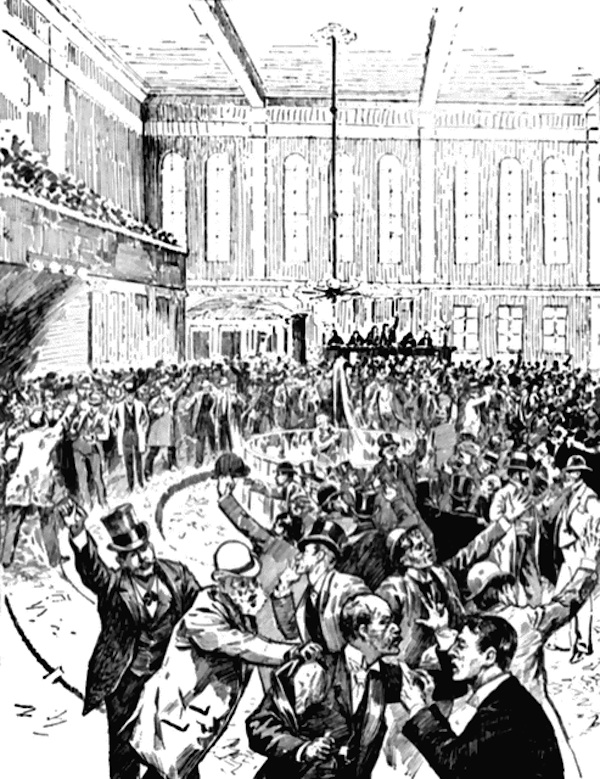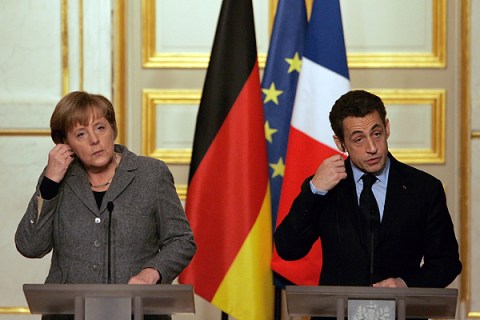Following up on June 5's ""It's Pretty Obvious This Will End Badly": In Historic Reversal, Grantham's GMO Goes Short US Stocks" which we intro'd with the teaser: If interested see "How Good (or bad) Are GMO and Jeremy Grantham's Market Calls?" after the jump.
And the headliner, from ZeroHedge, November 24:
Back in June, value investing legend Jeremy Grantham decided he had had enough, and in a historic reversal for his traditionally bullish GMO Benchmark-Free Allocation Fund, took down exposure to US equities from a net 3-4% to a net short position worth about 5% of the $7.5bn portfolio, "perhaps the first time the fund has turned net short US stocks since the crisis."
Grantham laid out the reasons for his bearish flip in a lengthy letter to GMO investors, writing that "we have never lived in a period where the future was so uncertain" and yet "the market is 10% below its previous high in January when, superficially at least, everything seemed fine in economics and finance. And if not “fine,” well, good enough. The future paths include many that could change corporate profitability, growth, and many aspects of capitalism, society, and the global political scene."
In short, the veteran value investor known for calling several of the biggest market turns of recent decades admitted he had lost his faith in an upside case and his sense of direction in a world of record uncertainty "which in some ways seems the highest in my experience" and as a result "in terms of risk and return – particularly of the worst possible outcomes compared to the best – the current market seems lost in one-sided optimism when prudence and patience seem much more appropriate."
Grantham also highlighted the obvious: that the market and the economy have never been more disconnected - a phenomenon which is now known as the K-shaped recovery, and pointed out that while "the current P/E on the U.S. market is in the top 10% of its history... the U.S. economy in contrast is in its worst 10%, perhaps even the worst 1%.... This is apparently one of the most impressive mismatches in history."
However, the value investing legend's most dire prediction was that "if you look back in two to three years and this market turns around and drops 50%, the history books will say ‘That looked like one of the great warnings of all time. It was pretty obvious it was destined to end badly," Grantham said, adding: "If it does end badly the history books are going to be very unkind to the bulls." (his full letter can be found here).
* * *
Perhaps Grantham will be proven correct and in the summer of 2022 the S&P will be a smouldering post-crash rubble of its former bull market glory, but a little over five months after Grantham made his fateful bearish call, his multi-billion fund is suffering unlike any time since the financial crisis.
According to Bloomberg, GMO’s flagship Benchmark-Free Allocation Fund, which as noted above turned net short in the early summer and which seeks returns of five percentage points above the rate of inflation, has badly underperformed risk assets so far this year. It trails the S&P 500 by 14%, and while its primary equity holdings are in emerging markets, it also lags behind MSCI’s main developing-market gauge.
And in a world where hedge fund clients demand returns here and now - especially with 13-year-old Robinhood daytraders generating triple digit returns - Grantham's dramatic underperformance has meant just one thing: a flood of redemption requests.
In just the past 10 months, clients have pulled $2.2 billion from the fund with assets dropping by more than half since 2015 to $6.6 billion as of the end of October....
....MORE
Among the links in that long-ago June post—at least it seems long-ago:
*****
Feb 2010
"Grantham’s ‘Horrifically Early’ Calls Challenge GMO"
March 2014
How Good Is Jeremy Grantham's Forecasting Record?
His strong pessimism drives GMO managed funds toward the most stable (large capitalization) value stocks, and these funds have performed fairly well (reflecting perhaps a value premium rather than market timing)....
As noted in that October 2019 post
It would be horribly ironic if Mr. Grantham's most accurate call in the last decade turns out to be S&P 3300 but we are betting that is where the market goes before all is said-and-done (and one of the reasons we can maintain a façade of equanimity in the face of drawdowns such as the Oct. 3 - Dec. 24, 2018 unpleasantness)
CXO Advisory did an analysis of GMO's glory days, 1999 -2009 which caught two major bear markets, the dot.bombs and the Great Financial Crisis, here if you want to take a look.
CXO is also the source for 2014's "How Good Is Jeremy Grantham's Forecasting Record?" above....
...MORE
The S&P 500 is at 3,633.15.








